Conveyor belt important raw material —-Rubber
As an important raw material of rubber conveyor belt—-rubber refers to a high elastic polymer material with reversible deformation. It is elastic at room temperature and can produce large deformation under the action of a small external force, and can restore the original state after removing the external force. Rubber belongs to a completely amorphous polymer, its glass transition temperature (Tg) is low, the molecular weight is often very large, greater than hundreds of thousands of. On the other hand , to be a good rubber conveyor manufacturer we have expert for rubber ,and study rubber in many years. Rubber is divided into natural rubber and synthetic rubber two kinds. Natural rubber is made from rubber trees, rubber grass and other plants; synthetic rubber is obtained by polymerization reaction. Rubber in addition to the production of rubber conveyor belt rubber products are widely used in industry or life aspects.
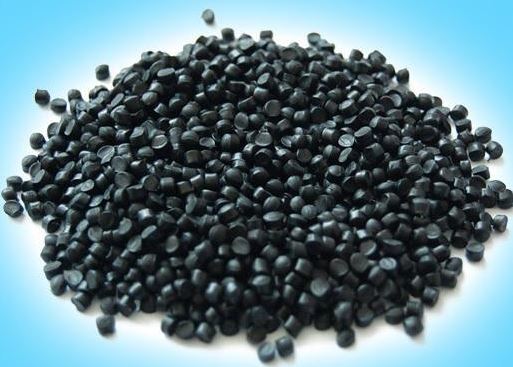
rubber material
The word rubber comes from the Indian word cau-uchu, meaning “the tree of tears”. Natural rubber is made from the latex after solidification and drying. In 1770, the British chemist, J. Priestley found that rubber could be used to erase pencil writing, a material called rubber, which is still used today. The molecular chain of rubber can be crosslinked. When the rubber is deformed by external force, it has the ability to recover quickly, and has good physical and mechanical properties and chemical stability. Rubber is the basic raw material of rubber industry, which is widely used in the manufacture of tires, hose, tape, cable and other rubber products. Three foil rubber trees offer the largest amount of commercial rubber. It suffers damage (such as the bark of the stem) and produces large amounts of sap containing rubber emulsions.
In addition, fig trees and some Euphorbia plants can also provide rubber. Germany tried to obtain rubber from these plants during World War II when rubber supplies were cut off, but later switched to produce synthetic rubber.
The original rubber trees grew in South America, but the artificial plants were also abundant in Southeast Asia. In fact, Asia has become the most important source of rubber.
Natural rubber is made from rubber latex, which contains a part of the non-rubber ingredients left in the solid natural rubber. Generally, natural rubber contains 92% -95% rubber hydrocarbons, while non-rubber hydrocarbons account for 5% -8%. Due to different production methods, different producing areas and even different rubber harvesting seasons, the proportion of these ingredients may be different, but they are basically within the range.
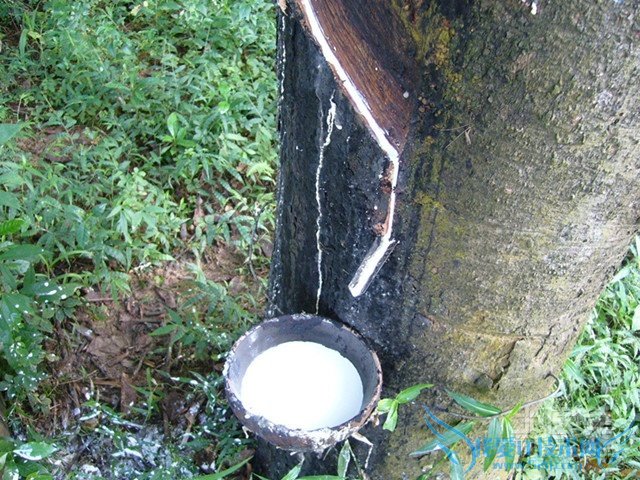
rubber tree
Protein can promote the vulcanation of rubber and delay the aging. On the other hand, protein has a strong water absorption, can cause rubber moisture absorption mildew, insulation decline, protein and increase the shortcomings of thermogenic.
Acetone extract is some advanced fatty acids and sterols, some of which act as natural aging agents and promoters, and some can help the powder complexes to disperse and soften the glue in the mixing process.
The ash mainly contains phosphate salts such as magnesium phosphate and calcium phosphate, and there are a small amount of metal compounds such as copper, manganese, iron and other metals. Because these variable metal ions can promote the aging of rubber, so their content should be controlled.
The water in the dry rubber is not more than 1%, which can be volatile in the processing process, but when the water content is too much, it will not only make the storage of raw rubber moldy, but also affect the processing of rubber, such as the mixing agent is easy to mix; easy to produce bubbles in the process of pressing and pressing, and bubbles or sponge in the vulcanization process.
Natural rubber is made from rubber latex, which contains a part of the non-rubber ingredients left in the solid natural rubber. Generally, natural rubber contains 92% -95% rubber hydrocarbons, while non-rubber hydrocarbons account for 5% -8%. Due to different production methods, different producing areas and even different rubber harvesting seasons, the proportion of these ingredients may be different, but they are basically within the range.
Protein can promote the vulcanation of rubber and delay the aging. On the other hand, protein has a strong water absorption, can cause rubber moisture absorption mildew, insulation decline, protein and increase the shortcomings of thermogenic.
Acetone extract is some advanced fatty acids and sterols, some of which act as natural aging agents and promoters, and some can help the powder complexes to disperse and soften the glue in the mixing process.
The ash mainly contains phosphate salts such as magnesium phosphate and calcium phosphate, and there are a small amount of metal compounds such as copper, manganese, iron and other metals. Because these variable metal ions can promote the aging of rubber, so their content should be controlled.
The water in the dry rubber is not more than 1%, which can be volatile in the processing process, but when the water content is too much, it will not only make the storage of raw rubber moldy, but also affect the processing of rubber, such as the mixing agent is easy to mix; easy to produce bubbles in the process of pressing and pressing, and bubbles or sponge in the vulcanization process.
Source and application characteristics of general-type rubber
The general performance of general rubber is good and widely used. Mainly have: ① natural rubber, from the three-leaf rubber tree latex made, the basic chemical composition for cisisoprene. Good elasticity, high strength, good comprehensive performance.② Iyl rubber, the full name is shun-1,4-polyisoprene rubber, the high isis synthetic rubber made from isoprene, because of its structure and performance and natural rubber similar, it is also called synthetic natural rubber.③ Rubber for styrene butadiene, or SBR, is made by copolymerization of butadiene and styrene. According to the production method, it is divided into emulsion polymerized styrene butadiene rubber and solution polymerized styrene butadiene rubber. Its good comprehensive properties and chemical stability.④ butadiene rubber, full name is cis-1,4-polybutadiene rubber, short BR, made from butadiene polymerization. Compared with other general rubber, vulcanized butadiene rubber has excellent cold resistance, wear resistance and elasticity, less heat under dynamic load, good aging resistance, easy to use with natural rubber, neoprene rubber, nitrile rubber, etc.⑤ Neoprene, or CR, is made from neoprene polymerization. Have good comprehensive performance, oil resistance, combustion resistance, oxidation resistance and ozone resistance. But its density is large, easy to crystallization and harden at room temperature, storage is poor, poor cold resistance.
Source and application characteristics of special rubber

rubber
Special type rubber refers to the rubber with some special properties. Mainly: ① nitrile rubber, or NBR, from butadiene and acrylonitrile copolymer. Good oil resistance, aging resistance, can be used in 120℃ air or in 150℃ oil for a long time. In addition, it also has water resistance, air tightness and excellent bonding performance.② Silicone rubber, the main chain consists of alternating silicon oxygen atoms with organic groups on the silicon atoms. High and low temperature resistance, ozone resistance, good electrical insulation.③ Fluoro rubber, a synthetic rubber containing fluorine atoms in the molecular structure. It is usually expressed by the number of fluorine atoms containing the fluorine unit in the copolymer, such as fluorine rubber 23, which is a copolymer of vinylidene difluoride with trifluorinated chloride. Fluoro rubber is resistant to high temperature, oil and chemical corrosion.④ Polysulfur rubber is made of condensation of dihalogenide with polysulfide of alkali metal or alkaline earth metal. Has excellent oil resistance and solvent resistance, but the strength is not high, aging resistance, processing is bad, smelly, and more with nitrile rubber. In addition, there are polyurethane rubber, chloro-alcohol rubber, acrylic ester rubber and so on.
The influence and effect of the rubber structure
The reinforcing performance of rubber is mainly affected on tensile strength and tear strength. The general rule is: when the particle size is the same, high structure carbon black has a large reinforcing effect on non-crystalline rubber, and generally has higher tensile strength and tear strength. Rubber structure is also the most important factor affecting the conductivity. The chain branch structure is easy to form an interwoven conductive pathway in rubber, which will improve the conductivity performance.
According to the morphology, it is divided into bulk rubber, latex, liquid rubber and powder rubber. Latex is a colloidal moisture dispersion of rubber; liquid rubber is a rubber oligomer, not vulcanation is generally sticky liquid; powder rubber is processed latex into powder, for ingredients and processing. The thermoplastic rubber developed in the 1960s, without chemical vulization, but using thermoplastic processing method. Rubber according to the use of and is divided into general and special two types. It is an insulator, not easy to conduct, but if water or different temperature, it may become a conductor. Conductivity is the easy case of the conduction of electrons from molecules or ions inside the matter. According to the source and method of raw materials: rubber can be divided into natural rubber and synthetic rubber. The consumption of natural rubber accounts for 1 / 3, and the consumption of synthetic rubber accounts for 2 / 3.
According to the appearance of rubber: rubber can be divided into solid rubber (also known as dry rubber), emulsion rubber (referred to as latex), liquid rubber and powder rubber four categories.
According to the properties and use of rubber: in addition to natural rubber, synthetic rubber can be divided into general synthetic rubber, semi-general synthetic rubber, special synthetic rubber and special synthetic rubber.
According to the physical form of rubber: rubber can be divided into hard glue and soft glue, raw glue and mixed glue.
According to the performance and use of the points: general rubber and special rubber.
crude rubber
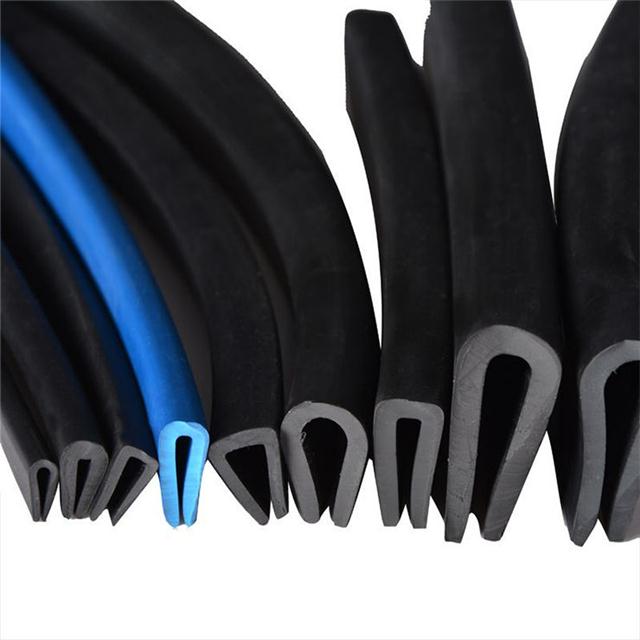
crude rubber NR
Natural rubber mainly comes from the three-leaf rubber tree. When the skin of the rubber tree is cut, it will flow out of the milky white juice, called latex, which is natural rubber by condensation, washing, forming and drying. Synthetic rubber is made by artificial synthesis method, and different raw materials (monomers) can be used to synthesize different kinds of rubber.1900-1910 Chemist C.D. Harris (Harris) determined the structure of natural rubber as a high polymer of isoprene, which opens up a way for artificial synthetic rubber. In 1910, Russian chemist SV Lebetev (Lebedev, 1874-1934) used metal sodium as the initiator to make 1,3-butadiene converge into sodium butyl rubber, and then many new synthetic rubber varieties appeared, such as butadiene rubber, neoprene rubber, butadiene rubber and so on. The production of synthetic rubber has greatly exceeded that of natural rubber, among which the largest production is styrene-butadiene rubber.
all-purpose rubber
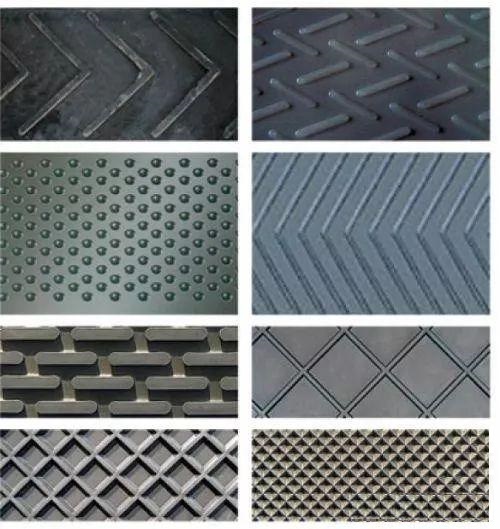
CONVEYOR BELT
Refers to the partial or complete replacement of natural rubber used in the rubber, such as styrene butadiene rubber, butadiene rubber, isoprene rubber, etc., mainly used for the manufacture of tires and general industrial rubber products. General rubber is in large demand and is the main variety of synthetic rubber.
SBR
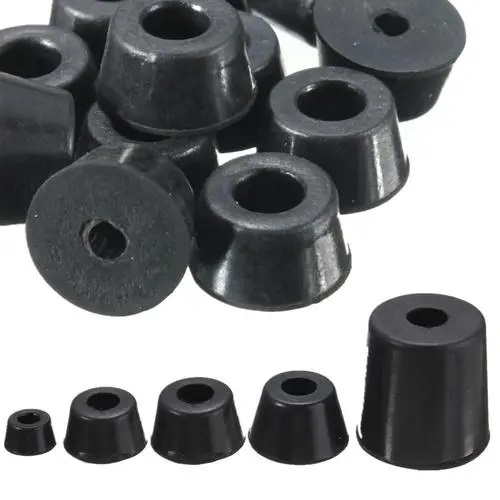
SBR
Butadiene rubber is made of butadiene and styrene, is the largest yield of general synthetic rubber, milk styrene rubber, soluble styrene rubber and thermoplastic rubber (SBR).
acrylonitrile-butadiene rubber
Nitrile rubber is made of butadiene and acrylonitrile by emulsion copolymerization of polymer, nitrile rubber with its excellent oil resistance, its oil resistance is second only to polysulfur rubber, acrylate rubber and fluorine rubber, in addition to nitrile rubber also has good wear resistance, aging resistance and air tightness, but ozone resistance, electrical insulation and cold resistance are poor, and electrical conductivity is better. Therefore, it is widely used in the rubber industry. The use of nitrile rubber is mainly used in oil-resistant products, such as various sealing products. Other as PVC modifier and with PVC as flame retardant products, and phenolic aldehyde as structural adhesive, do antistatic rubber products.
silastic
Silicone rubber is formed by the main chain of silicon and oxygen atoms, the side chain is a carbon-containing group, and the largest amount is silicone rubber where the side chain is ethylene. Both heat resistant and cold resistant, the use of the temperature between 100-300℃, it has excellent climate resistance and ozone resistance to use good insulation. The disadvantages are the low strength, poor tear resistance, and poor wear resistance. Silicone rubber is mainly used in aviation industry, electrical industry, food industry and medical industry.
cis-polybutadiene
Is butadiene by solution polymerization, butadiene rubber has particularly excellent cold resistance, wear resistance and elasticity, but also has good aging resistance. Sucadiene rubber is mostly used in the production of tires, and a small part is used in manufacturing cold resistant products, cushioning materials, tape, rubber shoes and so on. The disadvantages of butadiene rubber are poor tear resistance and poor slippery resistance.
isoprene rubber
Ioprene rubber is short for polyisoprene rubber and is produced by solution polymerization. Like natural rubber, isoprene rubber has good elasticity and wear resistance, excellent heat resistance and good chemical stability. The strength of isoprene rubber rubber (before processing) is significantly lower than that of natural rubber, but the uniform quality and processing performance are better than that of natural rubber. Ioprene rubber can replace natural rubber to make load tires and off-road tires can also be used to produce a variety of rubber products.
ethylene-propylene rubber
Ethpropylene rubber is synthesized with ethylene and propylene as the main raw materials, with outstanding aging resistance, electrical insulation performance and ozone resistance. Epropylene rubber can be filled with a lot of oil and filled with carbon black, the price of products is low, ethylene propylene rubber chemical stability, wear resistance, elasticity, oil resistance and styrene butadiene rubber close.propylene rubber is a wide range of uses, can be used as tire side, rubber and inner tire and car parts, but also can be used as wire, cable envelope and high voltage, ultra-high voltage insulation materials. Also can make rubber shoes, sanitary products and other light-color products.
chloroprene rubber
It is chloroprene as the main raw material, through homopolymerization or a small number of other monomers copolymerization. Such as high tensile strength, heat resistance, light resistance, aging resistance, oil resistance is better than natural rubber, styrene butadiene rubber, butadiene rubber. It has strong flame resistance and excellent flame retardant resistance, high chemical stability and good water resistance. The disadvantages of neoprene rubber are its electric insulation performance, its poor cold resistance performance, and its raw rubber is not stable in storage. Neoprene is widely used, such as making transport belts and transmission belts, wires, cables, making oil resistant hose, gaskets and chemical corrosion resistant equipment lining.
Rubber industry is one of the important basic industries of the national economy. It not only provides people with daily and medical light industrial rubber products indispensable in daily life, but also provides various rubber production equipment or rubber components to heavy industries such as mining, transportation, construction, machinery, electronics and emerging industries. It can be seen that the rubber industry has a wide variety of products, and the backward industry is very broad.
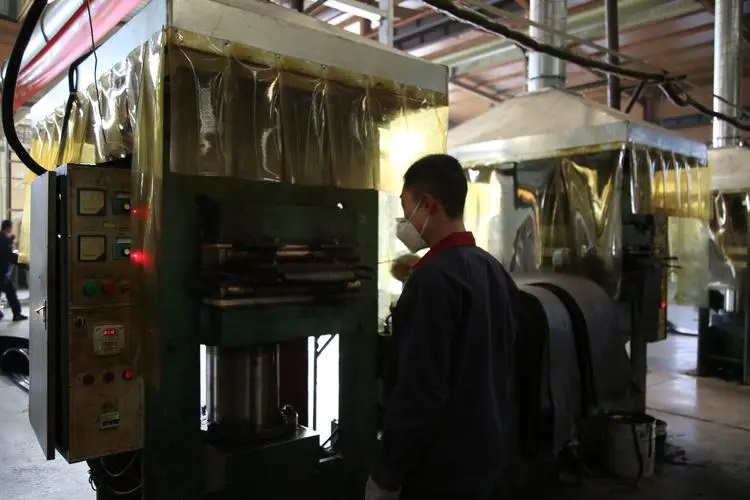
vulcanizing rubber
In recent years, the rubber industry has been a lot of development, the industry has been subdivided steadily rising, the new rubber subdivision industry is developing rapidly, but at the same time, the rubber industry also has the environment, resources, disasters, innovation and other problems.
In 2004, the total area of natural rubber planting was 696,200 hectares, the open area was 451,900 hectares, and the dry rubber output was 573,300 tons. Among them, the rubber planting area of agricultural reclamation is 411,000 hectares and 285,200 hectares, accounting for 59.03% and 40.97% of the total rubber area in China respectively.
In 2005, Hainan was hit by a rare drought in 50 years and a once-in-100 years typhoon, hitting natural rubber production. In order to tap the development potential of domestic natural rubber planting and processing and increase self-sufficiency, China’s rubber industry has made unremitting efforts to earnestly implement the national policy of safety, energy saving, environmental protection and clean production, and achieved major achievements. In particular, the rubber additives industry actively adjusts the product structure, and the green and environment-friendly additives have increased substantially. The output proportion of excellent varieties of anti-aging agent has reached 80%, the promoters have reached 50%, and the production of toxic, harmful and highly carcinogenic NOBS has been effectively controlled; the comprehensive utilization rate of waste rubber has reached more than 65%, and the processing and utilization of recycled rubber and rubber powder has been expanded.
In 2006, the third council of the sixth session of China Rubber Industry Association discussed and passed and issued the Opinions on the Scientific Development Plan of China Rubber Industry in the 11th Five-Year Plan ” and the opinions on the 11th Five-Year Plan of rubber industry. This is the first industry plan organized by the association. The plan shows that the rubber industry should take the road of independent innovation in the rubber industry during the eleventh Five-Year Plan period, and the whole industry should turn into the track of scientific development, so as to make China a world rubber industry power.
China’s rubber industry has a broad development prospect. By 2010, the total consumption of natural rubber in China will reach 2.3 million tons, the product structure of rubber industry will change greatly, new products and replacement products will increase, the application of new materials and new processes will be expanded, and the production technology will make significant progress.
The characteristics of the rubber industry determine that when the rubber industry of a country is mature, the economic situation of the industry will maintain a strong correlation with the operating status of the whole economy: the length of the development cycle is equal to the length of the economic cycle of the country, and the trend is the same direction; but because the rubber industry is a basic industry, its cycle change slightly before the change of the economic cycle. In addition, also because the rubber industry is at the front end of the production chain of the national economy, its cyclical fluctuation amplitude is less than that of the industry at the end of the industrial chain, and also less than the amplitude of the whole economy. Therefore, from the perspective of industrial investment, the mature rubber industry is relatively close to the income investment industry. China’s rubber processing industry is in a period of vigorous development. The rubber industry in various regions not only accelerates the process of China’s industry, but also drives the good situation of economic construction and development in various regions. China’s rubber industry is more developed areas are: Yunnan, Guangdong, Shandong Juxian, Hebei and other places.
Rubber raw material price fluctuations, the enterprise cost is difficult to control
In 2011, the price of rubber and other raw materials fluctuated greatly. The natural rubber set a record of 43,500 yuan / ton in the first quarter. In the second and third quarters, the synthetic rubber increased, with an increase of 10,000 yuan / ton, and then saw a sharp decline. Affected by the drastic fluctuations of rubber prices, tires and other major rubber products enterprises bear the brunt, the production and operation costs are difficult to control, the inventory risk increases, the profit space is compressed to 2% -5%, and the industry is facing severe challenges.
Industry growth rate of rational decline, driving into the track of benign development
Due to the sharp fluctuations of the price of rubber raw materials, the domestic and foreign markets continue to be depressed, the domestic demand slowed down, the output growth rate of China’s main rubber products fell and the export fell, but there were no big ups and downs, maintaining the overall stable economic operation. At the same time, the operation quality has been optimized: the product structure adjustment made progress, the meridian rate of tires reached 86.5%, 2.5% higher than last year, other product structure has been greatly improved; the transformation of rubber industry growth, tire dependence on external demand; the implementation of low carbon economy, the industry energy consumption decreased, a batch of energy-saving equipment, green tires and other products and green raw materials emerge. These changes show that when the economic growth rate is moderately reduced, it will help to adjust the structure and promote various reforms. China’s rubber industry economic operation began to enter the benign development track.
From January to October in the first half of 2012, the main economic indicators of the domestic rubber industry continued to maintain a small growth, the production growth of the main rubber products showed a continuous good trend, the growth rate of the export delivery value of industrial products decreased slightly compared with last month, and the efficiency of the industry continued to maintain a good trend.
Data show that from January to October 2012, China’s rubber products industry completed industrial output growth of 6.47% year on year, the comprehensive outer tire output increased 2.59% year on year, among which the radial tire output year on year growth of 3.13%, the whole steel radial tire output increased 6.55%, the meridian rate reached 87.23%, up 0.46 percentage points.
At the same time, the whole industry achieved a year-on-year sales revenue growth of 6.26%, inventory increased by 7.06%, a month-on-month decrease of 0.12%. The delivery value of export tires increased by 11.29% year on year, and the export rate (value) was 34.23%, an increase of 1.48 percentage points with 2011. The export tire delivery volume increased by 5.87% year on year, and the export rate (volume) was 42.83%, up by 1.32 percentage points compared with 2011.
Natural rubber can be divided into standard glue (also known as particle glue), smoke film, concentrated film, white crepe film, light film, rubber and air-dried film, the most commonly used is standard glue and smoke film. The standard glue is divided into four grades: level 1 (SCR 5), level 2 (SCR 10), level 3 (SCR 20) and level 4 (SCR 50), and the smoke glue is divided into five grades: number 1-5 smoke film (RSS 1-RSS 5).
Standard rubber: standard rubber is mainly divided into 5,10 rubber and 20 rubber. No.5 is the primary adhesive, which is the best with 0.05% impurities; No.10 is secondary adhesive, which contains 0.10%; No.20 is tertiary adhesive, which contains 0.20% impurities. Different types of glue have different uses: no. 5 glue is generally used to make tire inner tire; no. 10 glue and No.20 glue are generally used to make tire outer tire.
Smoke film: the film obtained after the roasting of the compressed natural film with the smoke and heat arising from the burning of the coconut shell. The purpose of smoking is to dry the film and inject it with antioxidative and anticorrosive cresol. Smoke film belongs to the primary shape of natural rubber.
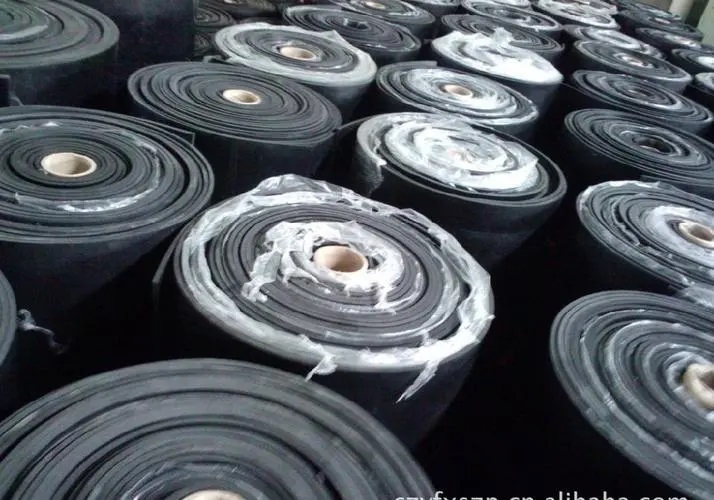
rubber belt
Concentrated glue: it can be used as a bonding material.
Crepe film:
Special thin white crepe film
The goods must be very white and uniform, dry, solid rubber.
No signs of discoloration, sour odor, dust, debris, gravel or other foreign substances, oil or other stains, oxidation or overheating resulting from any reason.
Primary thin white crepe film
The goods delivered must be white, dry, solid rubber. A very slight difference in color and depth is allowed.
Special thin light crepe film
The goods must be very light, uniform, dry, solid rubber.
Primary thin light color crepe film
The goods must be light, dry, solid rubber. A very slight difference in color and depth is allowed.
Secondary, thin, light-color crepe film
The goods delivered must be dry, solid rubber. The color is slightly deeper than the first-class thin, light-color crepe film. A slight difference in the shades of color is allowed.
Rubber with stains and strip marks to the degree indicated by the sample is allowed. However, in the adhesives tested, the number of such adhesives should not exceed 10% of the number tested.
Except as permitted above, no discoloration, dust, debris, gravel, oil or other external stains, oxidation or overheating caused by any reason.
Three-stage, thin, light-color crepe film
The goods delivered must be light yellow, dry, solid rubber. Differences in color and depth are allowed.
crude rubber NR
(Natural Rubber) Made from rubber tree collection latex, it is a polymer of isoprene. It has good wear resistance, high elasticity, breaking strength and elongation. It is easy to age in the air, become sticky in heat, easy to expand and dissolve in mineral oil or gasoline, alkali-resistant but not resistant to strong acid. Advantages: good elasticity, acid and alkali resistance. Disadvantages: not heat resistance, not oil resistance (vegetable oil resistance), is the production of tape, hose, rubber shoes, and suitable for the production of shock absorption parts, in the car brake oil, ethanol and other liquid with hydroxide used in the products.
SBR of butadiene gum
(Styrene Butadiene Copolymer) The copolmer of butadiene and styrene, compared with natural glue, uniform quality, less foreign body, better wear resistance and aging resistance, but the mechanical strength is weak, can be mixed with natural glue. Advantages: low cost of non-oil resistance material, good water resistance, hardness below 70 with good elasticity, high hardness with poor compressibility. Disadvantages: Strong acid, ozone, oil, oil esters and fat and most hydrocarbons are not recommended. Widely used in the tire industry, shoes industry, cloth industry and conveyor belt industry.
butyl rubber IIR
(Butyl Rubber) is made of isobutylene and a small amount of isoprene. Because the movement of methyl molecules is less than other polymers, the gas permeability is less, great resistance to heat, sunlight and ozone, and good electrical insulation; great resistance to polar bulk, and the general temperature range is minus 54-110℃. Advantages: impermeability to most general gas, good resistance to sunlight and odor, can be exposed to animal or vegetable oil or vaporized chemicals. Disadvantages: it is not recommended to use simultaneously with petroleum solvent, rubber kerosene and aromatic hydrogen. For automobile tire tire, leather bag, rubber paste paper, window frame rubber, steam hose, heat resistant conveyor belt, etc.
Hydrogenic nitrile gel HNBR
(Hydrogenate Nitrile) Hydrogen nitrile rubber is nitrile rubber. After hydrogenation, its temperature resistance and weather resistance are much higher than that of general nitrile rubber, and its oil resistance is similar to that of general nitrile rubber. The general use temperature range is minus 25-150℃. Advantages: Nitrile adhesive has a better wear resistance, with excellent corrosion resistance, tensile resistance, tear resistance and compressive characteristics.
In ozone and other atmospheric conditions have good resistance, generally suitable for washing clothes or washing dishes cleaning agent. Disadvantages: it is not recommended to use in alcohol, ester or aromatic solutions in the air conditioning refrigeration industry, widely used in environmental protection refrigerant, R134a system seals, automotive engine system seals.
Ec EPDM
Ethylpropyl gum EPDM (Ethylene propylene Rubber) is composed of co-polymerization of ethylene and propylene, so the heat resistance, aging resistance, ozone resistance, stability are very excellent, but can not be sulfur plus sulfur. To solve this problem, a small amount of the third component with a double chain is imported into the EP backbone and can be added into EPDM, generally the temperature is minus 50-150℃. Excellent resistance to polar solvents such as alcohol, ketone and other advantages: good weather resistance and ozone resistance, excellent water resistance and chemical resistance, can use alcohols and ketones, high temperature vapor resistance, good impermeability to gas. Disadvantages: not recommended for food use or exposure to aromatic hydrogen. Seal of high temperature steam environment sanitary ware equipment seals or parts. Rubber parts in the brake (brake) system. Seals in the radiator (car water tank).
butadiene-acrylonitrile rubber NBR
(Nitrile Rubber) It is composed of copolymerization of acrylonitrile and butadiene, the content of acrylonitrile from 18% -50%, the higher the content of acrylonitrile, the better the resistance to petrochemical oil hydrocarbon fuel oil, but the low temperature performance is worse, the general use temperature range is minus 25-100℃. Nitrile rubber is one of the most commonly used rubber for oil seal and O-ring: it has good oil resistance, water resistance, anti-solvent and high pressure oil resistance.
Good compression, wear resistance and elongation force.
Disadvantages: Not suitable for use in polar solvents such as ketones, ozone, nitrohydrocarbons, MEK and chloroform.? For the production of oil tank, lubricating oil tank and in petroleum hydraulic oil, gasoline, water, silicone oil, diester lubricating oil and other fluid media, especially sealing parts. Can be said to be the most versatile, the lowest cost of the rubber seal.
Chlorine gum CR
(Neoprene, Polychloroprene) is formed by the polymerization of the chloroprene monomer. Sulcanized rubber has good elastic wear resistance, not afraid of direct sunlight, has a particularly good weather resistance, not afraid of fierce distortion, not afraid of refrigerant, dilute acid resistance, silicone ester resistant lubricating oil, but not phosphate ester resistant hydraulic oil. At low temperature, it is easy to crystallize, harden, the storage stability is poor, and the expansion amount in the mineral oil with low aniline point is large, and the general use temperature range is-50~150℃. Advantages: good elasticity and good compression deformation, the formula does not contain sulfur, so it is very easy to make, with animal and vegetable oil resistance characteristics, not due to neutral chemicals, fat, oil, various oil products, solvent and affect the physical properties, with anticombustion characteristics.
Disadvantages: it is not recommended to use strong acid, nitrohydrocarbon, ester, chloroform and ketone chemicals in R12 refrigerant resistant seals, rubber parts or seals on home appliances. Suitable for making a variety of direct contact with the atmosphere, sunlight, ozone parts. Suitable for all kinds of flame resistant, chemical corrosion resistant rubber products.
Composition of synthetic rubber: Synthetic rubber is a polymer made with oil, natural gas as raw material, diolefin and olefin as monomer aggregation.
The polymer of rubber has broken through the process of monomer polymerization, and the world’s leading rubber factories have begun to use higher strength rubber, with superpolymer aggregation, and the cost is quite low.
rubber processing
This process includes plastic refining, mixing, rolling or extrusion, molding and vulcanization and other basic processes, each process has different requirements for the product, respectively with a number of auxiliary operations. In order to add various required complexes into rubber, raw rubber needs to improve its plasticity through plastic smelting; then mix carbon and black and various rubber additives with rubber; the rubber is pressed into a certain shape; then combined with the textile material (or with metal material) into a semi-finished product; and finally turn the plastic semi-finished product into a final product with high elasticity.
For products with high precision requirements, oil seal, O-ring, seal and other rubber products, but also need to trim, trimming processing, can be used by manual trimming, mechanical trimming and freezing trimming.
Artificial trimming: high labor intensity, low efficiency, low qualified rate.
Mechanical trimming: mainly cutting, grinding wheel trimming and round knife trimming, suitable for specific products with not high precision requirements.
Freezing trimming: special freezing edge trimming machine equipment, its principle is to use liquid nitrogen (LN 2) to make the edge of the finished product brittle at low temperature, use specific frozen particles (projectile) to hit the edge, in order to quickly remove the edge. Frozen trimming of high efficiency, low cost, a wide range of applicable products, has become the mainstream process standard.
mass detection
There are strict quality requirements in rubber materials and products, such as tensile strength, elastic modulus, elongation, aging resistance, etc. Rubber products are used in areas with high precision, and these parameters are often very demanding.
In the early stage of rubber development in China, rubber products committee was established, responsible for rubber research and development, academic, quality and other supervision.
1 Medium-resistant weight gain experiment
Samples can be taken from the finished product, soaked in the selected one or several media, and weighed after a certain temperature time, and the type of material can be inferred according to the hardness change rate of the weight change rate.
For example, soaking in 100℃ oil for 24 hours, NBR, fluorine glue, ECO, CR quality and hardness change rate is very small, while NR, EPDM, SBR weight is more than doubled and the hardness changes greatly, and the volume expansion is obvious.
2 Hot-air aging experiment
Sample from the finished product, put it in the aging box for one day, and observe the phenomenon after aging. Can be graded aging gradually heating up. For example, at 150℃ CR, NR, SBR are brittle, NBR EPDM and elastic. At 180℃ ordinary NBR is brittle; at 230℃ HNBR is brittle, and fluoride and silicone are still very elastic.
3 Burn method
Take a little sample and burn it in the air. Observe the phenomenon.
Generally speaking, fluorine glue, CR, CSM from the fire, even if the fire is much smaller than the general NR, EPDM. Of course, if you look closely, the burning state, color, and smell will also provide us with a lot of information. For example, NBR / PVC and glue, when there is fire fire splashing, there seems to be water, from the fire, thick and sour. It is important to note that sometimes the glue with flame retardant but not halogen will also extinguish the fire, which should be further inferred by other methods.
4 Measure the proportion
Use an electronic weighing or analytical balance, accurate to 0.01 grams, plus a glass of water, a single hair.
Generally speaking, the proportion of fluorine glue is the largest, above 1.8, CR ECO is also more than 1.3 above the proportion can be considered as these glue.
5 Low temperature method
Sample from the finished product and create a suitable cold environment with dry ice and alcohol. Soak the samples in low temperature for 2-5 minutes to feel the hardness and softness at the selected temperature. For example, below minus 40℃, the same high temperature and oil resistance is very good silicone and fluorine gel comparison, silica gel is relatively soft.
Rubber aging
deterioration phenomenon
Rubber and its products in the process of processing, storage and use, due to the comprehensive action of internal and external factors and cause the physical and chemical properties and mechanical properties of rubber gradually deteriorate, and finally loss of use value, this change is called rubber aging.
The performance is cracking, sticking, hardening, softening, powder, discoloration, long mildew, etc.
Aging factors
A Oxygen: oxygen has A free base chain locking reaction with rubber molecules in rubber, and the molecular chain breaks or excessive cross-links, causing the change of rubber properties. Oxidation is one of the important causes of rubber aging.
(B) Ozone: The chemical activity of ozone is much higher than that of oxygen, and it is more destructive. It also breaks the molecular chain, but the effect of ozone on rubber varies with the deformation of rubber. As a deformed rubber (mainly unsaturated rubber), and the stress direction of the straight crack, namely the so-called “ozone crack”; acting on the deformed rubber, only the surface of the oxide film but not cracking.
(C) Heat: raising the temperature can cause thermal cracking or thermal cross-linking of rubber. But the basic role of heat is still activation. Improve the oxygen diffusion speed and activate the oxidation reaction, thus accelerating the rubber oxidation reaction speed, which is a common aging phenomenon —— thermal oxygen aging.
(D) Light: The shorter the light wave, the greater the energy. The rubber is the higher energy of ultraviolet light. In addition to directly causing the breaking and crosslinking of rubber molecular chain, rubber produces free groups by absorbing light energy, which can trigger and accelerate the process of oxidation chain reaction. The outside line light acts as a heating process. Another feature of light use (different from thermal action) is that it is mainly carried on the surface of oak. For the sample with high glue content, mesh cracks will appear on both sides, namely the so-called “light outer layer crack”.
(E) Mechanical stress: under the repeated action of mechanical stress, the rubber molecular chain will break to generate a free process, trigger the oxidation chain reaction, and form a force chemical process. Mechanical breakage of molecular chains and mechanical activation of oxidation processes. Which can have an advantage, depending on its conditions. In addition, it is easy to cause ozone crack under the action of stress.
(F) Water: the role of water has two aspects: rubber in wet air or soaked in water, it is easy to destroy, this is due to the water-soluble substances and hydrophilic groups in rubber are dissolved by water extraction, hydrolysis or absorption and other reasons. Especially under the alternation of water immersion and atmospheric exposure, it will accelerate the destruction of rubber. But in some cases, the water does not damage the rubber, and even has the effect of delaying aging.
(G) Oil: if the long-term contact with the oil medium, the oil can penetrate into the rubber to cause swelling, resulting in the strength and other mechanical properties of rubber. The oil can make the rubber swell, because the oil penetrates into the rubber, the molecules spread with each other, so that the network structure of the vulcanized rubber change.
(H) Others: the action factors for rubber are chemical media, variable valence metal ions, high-energy radiation, electricity and biology, etc.
Adhesion repair
The greater the polarity of the rubber, the better the bonding effect. The nitrile neoprene has great polarity and bonding strength; natural rubber, silicone rubber and isobutyrene have small polarity and weak adhesion. In addition, the rubber surface often has the release agent or other free additives, hindering the bonding effect.
Rubber with adhesive, the specific method is divided into hot stick method and cold bonding method.
The thermal bonding method is to use the unvulcanized rubber and the sticky rubber products to achieve the adhesive bonding. The method is complicated, requiring heating and pressurization equipment, which is inconvenient to use.
Cold bonding method is to apply the adhesive on the surface of the adhesive products, air and overlap, and solidify at room temperature. Of course, proper heating is conducive to shortening the curing time and improving the bonding strength. Cold stick method is simple and easy to operate, and save energy, which is a good method worth popularizing.
Different kinds of rubber products, the adhesive used is also different, we should pay attention to the choice, can not be used at will.
Natural rubber is the rubber liquid flowing out from the rubber tree, processed into the elastic solid, is an unsaturated natural polymer compound. Natural rubber with methanol, toluene, isopropyl alcohol and other skim, with a wooden file, sand cloth hair. For high strength bonding, chemical treatment, that is, soak the adhesive surface with concentrated sulfuric acid for 2-10min. Before bonding, bend and fold several times, so that many tiny cracks appear on the surface, which is conducive to bonding. Adhesive used: BD801 rubber adhesive, BD817 elastic adhesive, BD818 high strength elastic adhesive, etc.
Aging resistant products made of metal oxide vulcanized neoprene rubber, such as cable coating, rail cushion, and transport belt; heat resistant products such as rubber hose, and oil resistant products such as rubber pad and rubber roller.
Chloroprene products are skim with toluene, methanol, isopropanol, and coarse with sand cloth, wood file and steel wire brush. If chemical treatment is needed, they can be immersed in concentrated sulfuric acid at room temperature for 3-30rain, washed and dried. Adhesive used: BD817 elastic adhesive, BD818 high strength elastic adhesive, BD819 high temperature elastic adhesive, BD801 rubber adhesive, BD802 high strength rubber adhesive, BD803 high temperature rubber adhesive.
Nitrile rubber has good comprehensive physical and mechanical properties, can make oil and heat resistant tape, hose, rubber board and other products. Nitrile rubber products with methanol degreasing, with wood file, sand cloth or steel wire brush hair coarsening, can be chemical treatment.
Foam rubber, commonly known as sponge, has heat preservation, vibration prevention, sound insulation, insulation and other functions, and is used to make doors and Windows sealing strip, anti-vibration liner, etc. In the bonding, do not need to make special treatment, as long as the removal of dust and dirt is enough. Adhesive used: BD817 flexible adhesive, BD818 high strength flexible adhesive.
In daily life and industrial production often encountered rubber with other materials.
(1) bonding of rubber and metal
The bonding of rubber and metal is the most effective way to connect metal with rubber. Metal to rubber can strengthen, skeleton role; rubber makes the metal has wear resistance, vibration reduction, impact resistance, corrosion prevention, insulation, sealing and other functions, the result is the combination of rigid and soft, strong and tough.
Natural rubber and metal cold glue, to first degreasing, hair, and then degreasing, and even chemical treatment.
Nititrile rubber and metal glue, first degreasing; and metal grinding; rubber grinding wheel wool.
(2) rubber and glass
Rubber should be degreased with methanol and isopropyl alcohol, brushed with wood file, grinding wheel, wipe the glass with acetone, coated with KJ-550 ethanol solution with 1% mass fraction, and let dry.

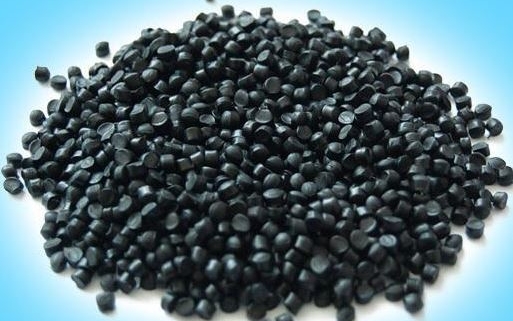 rubber material
rubber material
Leave a Reply
Want to join the discussion?Feel free to contribute!